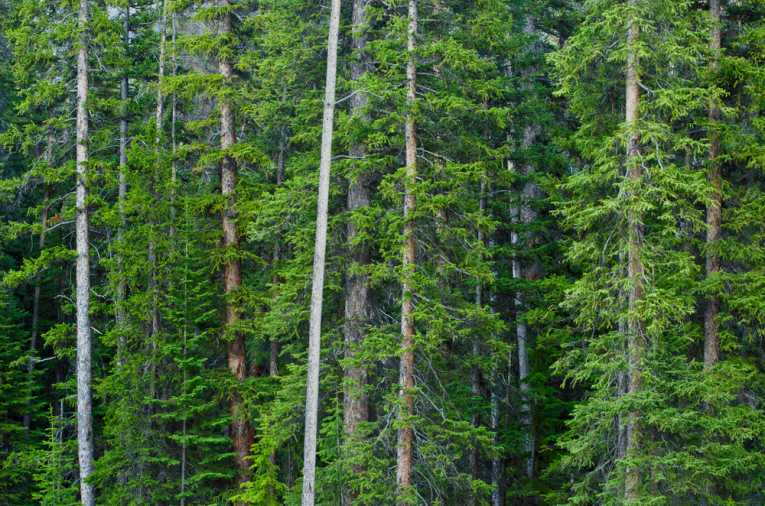Global warming is causing a strange phenomenon in tree species. The warming is causing certain species of trees to die out in regions that they have lived for hundreds of years. Insect attacks, the spread of diseases and even fire are causing these declines but are also allowing new species to move in and replace them, effectively causing a huge "migration". This is reshaping forests in a new survival of the fittest as conditions change.
Scientists have outlined the impact of global warming upon tree life in a new report. It makes the suggestion that many species of trees are losing their competiveness over environments and therefore allowing newcomers to move in and replace them.
Shockingly, researchers in central California have stated that they believe more than 50% of the current species of tree would not be expected to survive in these climate changes in the future. It was stated that common species such as lodgepole pine would eventually be replaced with other trees such as ponderosa pine or Douglas-fir while other areas may change completely with no tree life and therefore become desert or simply grass savannah.
The professor emeritus at Oregon State University, Richard Waring, is the lead author of the study and said, "Some of these changes are already happening, pretty fast and in some huge areas, in some cases the mechanism of change is fire or insect attack, in others it's simply drought." He continued, "We can't predict exactly which tree (species) will die or which one will take its place, but we can see the long-term trends and probabilities. The forests of our future are going to look quite different."
Waring explained that trees survive in their native areas as they are the trees that have adapted and become most competent in survival to that specific environment, including the temperature, cold-tolerance and other factors. However, as those environments change these species could lose their competitive edge and begin to decline or even die out completely.
The survey was completed over 4 years with 15 coniferous tree species that are widely found in West Canada and the USA. The survey used remote sensing and explored the impacts in 34 different "eco-regions", including the Columbia Plateau, Yukon Highlands, Snake River Plain and the Sierra Nevada.
By 2080 the prediction is that average temperatures could be 5-9 Fahrenheit warmer than they are now with more precipitation in the winter and sprint and less in summer. If this is to happen then the research suggests large declines in lodgepole pine and Englemann Spruce while species more adaptable to these temperatures will expand, such as western hemlock.
It projected which tree species would be at highest risk of disturbance in a future that's generally some of the greatest shifts in tree species are expected to occur in both the northern and southern extremes of this area, such as British Columbia, Alberta, and California. The research also showed that already more than half of the evergreen species are seeing large drops in their competitiveness in at least six of the eco-regions studied and conditions have become a lot more favourable for the increase in insect attacks and outbreaks of certain diseases. The increase in temperature will also see a further increase in the frequency of fire and trees that have poor drought resistance will also face a growing challenge.
A co-author of the study, Professor Steven Running from the University of Montana, "Ecosystems are always changing at the landscape level, but normally the rate of change is too slow for humans to notice."
Scientists said that although the rate of changes has indeed increased it will still take time and that a stability of forest composition will not come anytime soon and could even take hundreds of years.
"There's not a lot we can do to really control these changes," Waring said. "For instance, to keep old trees alive during drought or insect attacks that they are no longer able to deal with, you might have to thin the forest and remove up to half the trees. These are very powerful forces at work."
Researchers have suggested that the use of "connective corridors" could be the best approach for the future so that trees can naturally migrate without the hindrance of artificial boundaries and can take their natural path.










